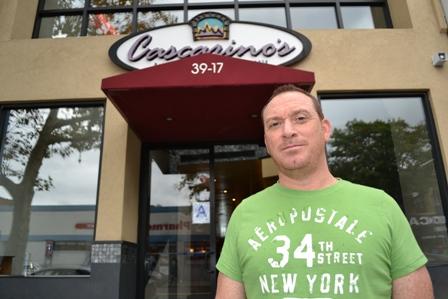While the city’s Department of Health and Mental Hygiene (DOHMH) officials are cleaning up restaurants throughout the city, restaurant owners are claiming their wallets are being cleaned out at the same time.
Starting in July 2010, the DOHMH made it a requirement for restaurant owners to post the letter grade results of their sanitary inspection.
The grading system is intended to bolster aptitude toward being as clean as possible, but many restaurant owners believe that the frequency of inspections and number of fines received are becoming increasingly unfair.
According to the DOHMH web site, when a restaurant improves between initial inspections, the department reviews it less frequently.
“In about a year, they came three times even though we had an ‘A,’” said Dina Amatuccio, manager of Cascarino’s in Bayside. “The codes change and they don’t tell us. It’s aggravating because they come here when it’s really busy and it takes away from being able to pay attention to the customers. It’s annoying.”
Other restaurant owners in Bayside reported similar experiences with inspectors who, according to the DOHMH, are randomly assigned to specific eateries. One owner said that while an inspector may be paying attention to one area of violations, the next will concentrate on something completely different. A DOHMH spokesperson said that fines usually range from $200 to $2,000 based on severity of violations.
“We are just trying to survive here,” said one Bayside owner, also displaying an ‘A’ in his front window.
He said that despite the grade, he has had to pay violations twice over the past six months.
“The way they change the rules, I had to hire a guy just to make sure everything is perfect. I know they are trying to look out for the customer, but they should be more worried about places that have ‘B’ or ‘C’ ratings.”
Inspection cycles are individual to each restaurant, based on its pattern of cleanliness, according to the DOHMH. Some inspections are based on customers’ complaints or re-inspections from prior violations.
“The overarching goal of the restaurant letter grading program is transparency and food safety, not revenue or fines,” said a DOHMH spokesperson. “The Department is now inspecting restaurants that perform at ‘C’ grade levels about three times each year, ‘B’s twice, and ‘A’s, once per year. Each time a restaurant improves its score on its initial inspections, it can reduce the frequency with which it is inspected, and thereby decrease its potential to incur violations and pay fines.”
One Long Island City restaurant owner who received a ‘B’ inspection grade believes that the system is too ambiguous for customers to understand.
“They see a low letter grade and they automatically think the restaurant is dirty,” said the owner. “We have a ‘B’ because we didn’t have the appropriate paperwork on file. Consumers see the grade and they think the worst . . . Personally, I like the grading system. I think restaurants should put out high-quality food that is safe for the public and is held to a certain standard. I thought it was great until I saw the way they were doing it. They come in for an inspection, find something, fine you and then another inspector comes in and doesn’t inspect what the last guy inspected. He just finds something new and fines you for it.”
During the 2011 fiscal year, revenue collected for fines from food service establishments reached $42.5 million dollars, according to the DOHMH. The Health Department anticipates a five percent reduction in fines collected each year for the next two years going forward.
In January, Mayor Michael Bloomberg announced a fine relief program designed to reward those who got an ‘A’ grade on initial and re-inspections with no fines.
Still, restaurant owners have a different take on inspections.
“I think there’s a lot of miscommunication on the inspector’s end,” said Chris Evans, co-owner of Press 195 in Bayside with an ‘A’ grade. “You’ll get a story that something is wrong and we’ll correct it. Then, another inspector will come and say that’s not how it should be done. You’ll be told to do one thing and they fine you for it the next time.”
“Inspectors are really going rogue at this point,” said the previously-mentioned Long Island City restaurant owner. “I think the bottom line is that the city needs money . . . for us small places, these fines are killing us.”
Restaurant grades throughout the city, including all recorded violations as well as statistics from the first year of grading implementation, can be found by visitingwww.nyc.gov/health.
–With additional reporting by Melissa Chan and Steve Mosco


































